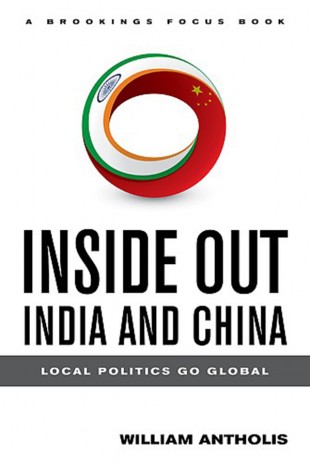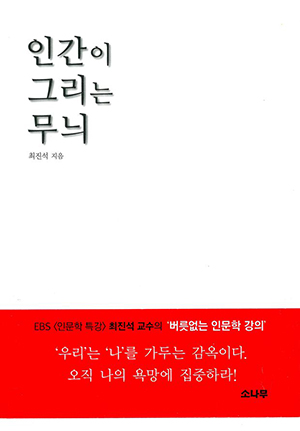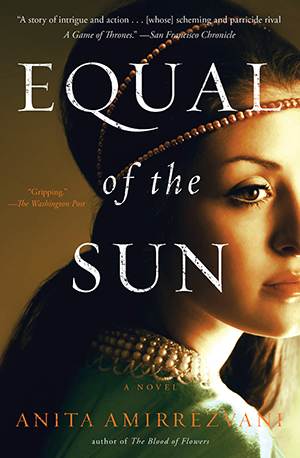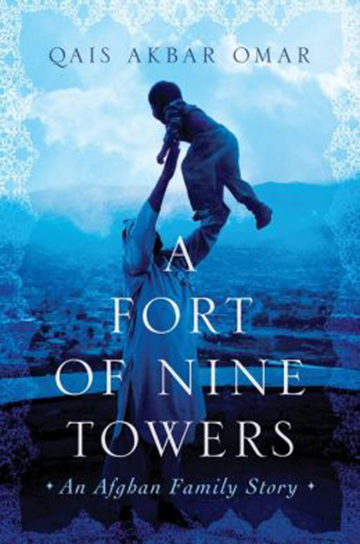[Books] Mental map of local India and China
Inside Out, India and China: Local Politics Go Global
By William Antholis | Brookings Institution Press | 2013
The world has its eyes on the two emerging Asian giants, India and China, which not only contain one-third of the world’s population, but also have been steadily growing at amazing rates during the past decade, even during the economic crises. William Antholis, managing director of the Brookings Institution and a former White House and State Department official, spent five months traveling to over 20 states and provinces in India and China, exploring the diversity of business, governance and culture.
His observations, research and interviews with various stakeholders in different sectors and regions confirm his belief that key policy decisions are being formulated and implemented by the local government, rather than the central government. Entrepreneurship is being encouraged in both local economies by the private sector and the local government. Antholis provides examples of local innovation strategies for policies and businesses: of both successes and failures. He emphasizes that India and China are not nations with one mind and one interest even though diplomats have often referred to China and India as “Beijing” and “New Delhi respectively.” Even though India’s government is known for being fragmented, China’s central government has especially been viewed as monolithic and all-powerful. However, Antholis reveals that they are both not completely controlled by the central government. Economically advanced and wealthier local areas and cities are gaining global awareness.
India and China are more decentralized than the US, Europe, Latin America, etc. They are vast, diverse, innovative and dynamic. The extent to which local governments influence internal policies and foreign policy is still open to debate, but it is a new perspective that can provide a better understanding of the trends in the two countries and go beyond simplistic generalization. Antholis advises the West that corporations and investors need to know more than what happens within the capitals. The main cities are not accurate measures of the diversities. Each country has its own agricultural heartlands, high-tech passages, resource-rich areas and manufacturing regions. Each region has its own major economic, social and environmental challenges. However, few have a mental map of the local areas of these countries and how they affect the whole. Organizations, businesses and government should not overlook these important changes, where the two Asian giants are developing from inside out. In other words, local politics are being influenced by global forces and are also shaping them.
The Land of the Five Flavors
A Cultural History of Chinese Cuisine
By Thomas O. Höllmann, Translated by Karen Margolis | Columbia University Press | 2013
Sinologist Thomas Höllmann presents an in-depth history of Chinese cuisine and food culture from ancient burial rituals to the present day Western fast food restaurants. Höllmann maps out cuisine and its distinctiveness in the different geographic locations in China affected by local customs, foreign influences, trade routes and ethnic composures. We can better understand how food affects the economy, the influence of Chinese philosophy and religion on cuisine, traditional dietary customs and superstitions, and daily Chinese life, arts and culture.
The Great Kanto Earthquake and the Chimera of National Reconstruction in Japan
By J. Charles Schencking | Columbia University Press | 2013
Charles Schencking revisits the Great Kanto Earthquake in 1923 and presents a well-researched account of the earthquake, its implications and interpretations. Many hoped to make the best of the natural disaster and damage and use it as an opportunity to rebuild and better manage the city and its inhabitants. Some also wanted to use the earthquake as an incentive to inspire people to reflect and combat the moral degeneration of Japan. Not only does Schencking shed light on Japan’s experience and interpretation of the earthquake, but he also challenges the assumption that disasters unite societies.
Golden Parasol: A daughter’s Memoir of Burma
By Wendy Law-Yone | Chatto & Windus | 2013
Golden Parasol provides a unique portrait and memoir of Burma through Wendy Law-Yone and her father’s story of the country’s tumultuous history. In 1962, the military coup took over and consequently Wendy’s father Ed Law-Yone’s newspaper The Nation shut down, and he was arrested and imprisoned as a political prisoner for five years. Wendy was also imprisoned briefly. After Ed was released, he attempted to set up a revolution in Thailand for a new democratic government even though unsuccessful. Many years later, Wendy comes across her father’s neglected manuscript, which reveals an amazing saga and inspiration for this book.
Human-drawn Patterns: The Desired Power of Humanistic Insight
By Choi Jin-seok | Sonamoo | 2013
Philosopher and professor at Sogang University Choi Jin-seok has led the humanities fever in Korea through his “humanistic footprints.” Choi insists that the purpose of studying the humanities is to understand the patterns we create. He emphasizes that we should not be bound by external ideologies, beliefs and values, but focus on existing on one’s own. To do this, one should become an independent being through humanistic insight and the foundation for this is to shed nouns and allow verbs to exist and lead.
Ethnographies of the State in Central Asia: Performing Politics
By Madeleine Reeves, Johan Rasanayagam and Judith Beyer | Indiana University Press | 2013
Ethnographies of the State in Central Asia provides fresh and exciting insights into the daily politics in Central Asia. Instead of just focusing on the power dynamics between weak and strong states, the book focuses on first understanding the concept of democracy, authority and justice in this important region. When observing the state powers, current state power theories as well as ethnographic research in various settings ranging from local to transnational, mundane to the sensational, help to provide a clearer and unique view of everyday politics.
Equal of the Sun
By Anita Amirrezvani | Scribner | 2013
Few know of the celebrated charismatic and powerful women of the Muslim world. Anita Amirrezvani’s novel Equal of the Sun is loosely based on the life of Princess Pari Khan Khanoom. In 1576 Iran, at a time of great wealth and prosperity, the shah dies without naming an heir and the court is thrown into turmoil. Princess Pari, the Shah’s daughter and protégée, knows the inner workings of the state better than anyone else and she and her closest advisor eunuch Javaher try to bring order to the court. However, their efforts create much resentment and dissent and lead to a power struggle of brave and passionate men and women.











